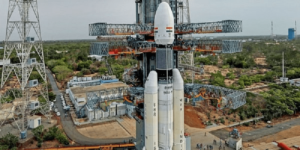When Alok Mittal was thinking of starting up, he realised that fintech in the SME and MSME space was largely underserved.
Alok had found that close to 85 percent of SMEs and MSMEs were not getting formal credit in any form. Further analysis revealed a whopping $397 billion of unfulfilled credit requirement in the segment.
This led him to start Indifi in May 2015.
“Given the high quality of talent available in the Indian banking system, we did not believe that MSME credit access problems were to do with laziness of banks. Quite to the contrary, broadening this access required discrete innovations in origination, onboarding, and underwriting mechanisms for MSMEs. We also realised that technology and data availability were reaching a tipping point for such an alternate architecture to emerge,” says Alok.
Alok Mittal
Core problems it addresses
Alok and his team found that only about 15 percent of Indian MSMEs have formal access to credit. Upon further study, they found that the core problems that were inhibiting the growth of formal credit were –
(a) Lack of data and underwriting models
(b) Lack of last mile distribution
(c) High operating costs – NBFCs often incur an operating cost of Rs 30,000 to Rs 40,000 for onboarding and managing a loan of Rs 5 lakh.
Targeting these gaps, Indifi has designed an alternate and more scalable model of MSME credit growth.
Since its launch, Indifi’s platform has evolved into the only MSME credit platform with end-to-end process automation, data linkages with over 100 data partners, and supply-side linkage with over a dozen lending partners. As a result, it is the only MSME platform with no feet-on-street personnel for sales or credit evaluation.
So far, Indifi has disbursed over 35,000+ loans, amounting to over Rs 3,000 crore, with 80 partners across 650 cities.
Building the products
According to Alok, micro and small enterprises need simple products that fit their business models. Standardised long tenure term loans prove to be a bad choice of product because they put too much money in the hands of the MSME without adequate monitoring.
Indifi has designed its products such that they suit the use cases dominant in each industry – hence, restaurants may need a short tenure term loan for minor renovations, whereas retailers may need working capital to account for seasonal peaks in business.
Traditional banks and their loan management systems have lacked the agility to support such a wide variety of products.
“Our in-house loan origination system and loan management system capability has allowed us to support such use cases. More recently, it has allowed us to introduce very short-tenure liquidity products like advance settlements and purchase financing,” adds Alok.
Starting with a “two-pizza” team
Alok says they started the company with a bias for early launch, “which would then speed-up our learning curve”. The team launched the first version of the platform within four months, with a skeletal “two-pizza” team, he adds.
This was a fully functional platform, though the capabilities were staggered to prioritise the most important hypotheses – that the origination partners and their customers would be willing and able to absorb a completely digital process.
“Note that prior to that, there was no precedence to MSMEs availing credit in a 100 percent remote model. Over the next two-three months, we understood customer behaviour better, and gained confidence in the viability of our thesis. One of our initial learnings, for example, was that customers would lead the adoption curve relative to regulations. Hence, we decided to provide pen-and-paper backups to regulatory compliance requirements such as KYC,” explains Alok.
The team also realised that to reach their vision of digital MSME lending, they would have to engage with the broader ecosystem and advocate conducive policy measures.
Monitor behaviour
Alok notes that they saw great response to their initial launch, and since then, they have been in a continuous development and release mode. What the initial launch did though was to allow the team to determine the drivers of the product development process. He says,
“For example, we were able to confirm that customers’ digital behaviour was evolving rapidly, and hence, we would stay ahead of the curve in building capabilities, many times leading the market by 12-24 months. We also realised the nodal role we would have to play in bringing our lending partners (banks and NBFCs) up the curve on such digital model – in response to that, we acquired our own NBFC that we would use to demonstrate such capabilities to our partners. Thirdly, the diversity of business ecosystems and use cases that we were to handle drove focus towards building a well-architected loan management backend.”
The team built the platform in-house.
Alok says one of the good decisions they took was to have a CTO in the company from day one. They also explicitly drove the culture of having a few great engineers, rather than a large mediocre team.
“It became relatively easier to hire and nurture this team with the CTO in place. We have kept our development cycles short and agile to incorporate user feedback. For example, one of the key opportunities we realised was how the control on fund-flow could act as a significant risk mitigator in MSME lending – this concept is already used in corporate lending, but the cost structures did not scale-down well to MSME loans. In response to that, we built both end-use monitoring and inbound escrow management capability. Given our partner lender model, we apply these capabilities to the benefit of any of the lenders using our platform.”
What works with the customer base?
Alok adds that most of the innovations beyond the strategic business model choices have come as a result of ground-up opportunities. For example:
- More than 85 percent of Indifi customers now use electronic documentation – this number was close to zero when they started, and under 40 percent just 18 months back. Getting to such level of penetration in MSME space has required the team to innovate and create multiple pathways, while always looking for solutions that can span across the multiple lenders on our platform.
- While refining the credit models, they realised that the pace of evolution of credit models tends to be slow, given that the feedback loops involve the performance of loans that is realised over several quarters. “We are perhaps one of the first few companies globally to short-circuit such learning curves by combining human input with machine intelligence,” claims Alok.
- Within the underwriting process, the team borrowed from the medical domain in building simulators that help our underwriters improve faster, by benefitting from instant feedback in a simulation environment.
One of the core insights the team bet behind was the emergence of large business ecosystems – ecommerce marketplaces, food delivery, payment ecosystems, etc – and how formal credit can be expanded using those ecosystems. To date, Indifi’s core business continues to revolve around that insight.
“Similarly, the power of data feedback loops were recognised relatively early, and that has allowed our MSME credit models to break new ground and help make progress towards the vision of greater credit inclusion,” notes Alok.
The key challenge in building MSME lending platforms is the heterogeneity. Be it in the use-cases that customers would like to support, the nature of business ecosystems and data that they bring in, or the way banks and NBFCs would like to work with the platform.
The platform thus played a dual role of designing systems to incorporate this mix, as well as driving a degree of standardisation into such an operating model. From a platform standpoint, having a loosely coupled agile architecture has helped the team innovate and be relevant.
The market and future
The MSME sector is growing at a fast clip, and its contribution to India’s GDP continues to soar. According to the Confederation of Indian Industry (CII), MSMEs contribute 6.11 percent to the manufacturing GDP, 24.63 percent to the GDP from service activities, and 33.4 percent to India’s manufacturing output.
Despite the huge contribution, the sector is considered laid back. Others in the lending segment include LendingKart, NeoGrowth, Vivriti Capital, Shubh Loans, Happy Loans, KhataBook, and OkCredit.
“Our future plans mainly revolve around driving that phenomenon, while continuing to cater to multiple financial needs to our customers. The rapidly evolving public technology infrastructure, such as account aggregators and loan service providers, provides another direction of evolution to our platform. However, beyond these longterm directions, we believe that our ability to move the needle on MSME credit inclusion will be driven by our ability to stay close to customers and make hundreds of small innovations from quarter to quarter,” says Alok.

![You are currently viewing [Product Roadmap] How Indifi Technologies used tech to disburse over 35,000 SME loans](https://blog.digitalsevaa.com/wp-content/uploads/2021/08/IMG0129-1628607262798.jpeg)



![Read more about the article [Funding alert] Fashinza raises $100M in Series B led by Prosus, Westbridge Capital](https://blog.digitalsevaa.com/wp-content/uploads/2022/05/CopyofImageTaggingNewBrandingEditorialTeamMaster27-1652853167169-300x150.png)



![Read more about the article [Funding alert] Mobility startup Get My Parking raises $6M from IvyCap Ventures, IAN Fund](https://blog.digitalsevaa.com/wp-content/uploads/2021/05/Imagedjr9-1622117961179-300x150.jpg)
